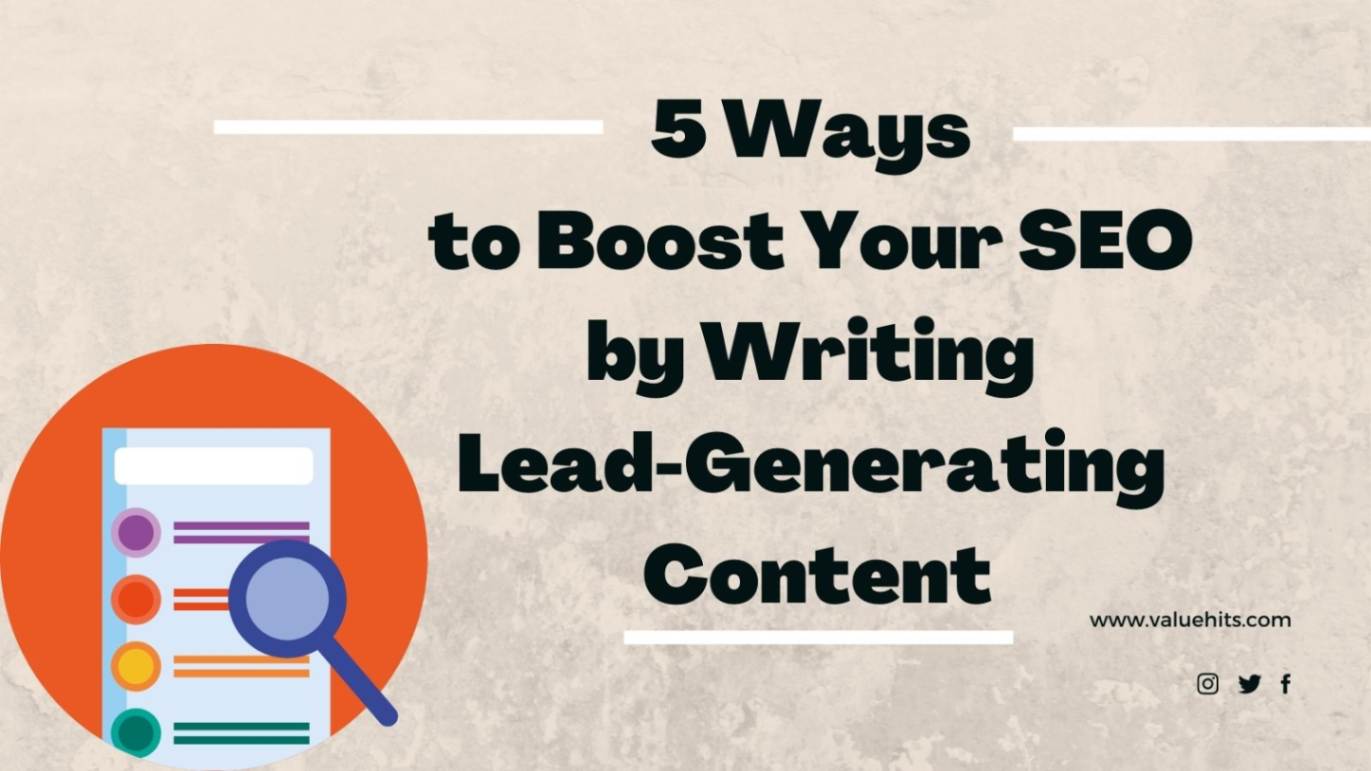KEYWORDS: Boost Your SEO by Writing Lead-Generating Content with this 5 ways 5 Ways to Maximize Lead Generation on Your Website Boost Your Lead Generation with Content Marketing SEO Content Writing Services
5 Ways to Boost Your SEO by Writing Lead-Generating Content
Content Writing | June 10, 2022
When starting a business, it's tempting to focus your efforts on generating traffic to your website and social media pages in order to boost your search engine optimization (SEO). However, if you ignore lead generation as you work on SEO, you could be sacrificing your ability to reach out to new customers in the future and gain profit from them. If you need help ensuring that your SEO efforts don't come at the expense of lead generation, check out these five ways to boost your SEO by writing lead-generating content.

Start with keyword research
We all know that we need to focus on SEO as part of a content marketing strategy. Yet, many companies still struggle with how they should actually go about it. The first step is figuring out which keywords you should be focusing on. If you don't already have a list of target keywords, start by doing your research and seeking advice from an SEO company in India like us at Valuehits. After that, it's time to craft great content based on those keywords. Use words that people are likely to search for and make sure each piece of content contains one or two important keywords per paragraph. Then, link back to your site whenever possible. Once you've got some great pieces of SEO-friendly content online, Google will notice them—and so will potential customers!
Highlight your benefits instead of features
Don't just focus on features; instead, highlight what it is you can offer them—the benefits they'll get from your product or service. These are things you can quantify and back up with proof, which is a lot more convincing than simply rattling off a list of your cool features. To use as an example, if you own an SEO company in India and want to showcase some of your finest work to attract potential customers, focus on talking about how many leads (or clients) each campaign generated. Just remember that if you only talk about what you do (the features), people will assume that's all there is. Focus on proving why it works for them (the benefits).
Use lists in your content
Whether you're compiling a list of your top 10 favourite high school teachers or featuring five must-know SEO facts, using lists in your content can help you boost SEO. Search engines are attracted to sites that provide readers with helpful and actionable information—and their algorithms reward those who do so with higher rankings. When you create relevant lists for your site, you give search engines exactly what they want and encourage people to click through from one page to another. And that's good for SEO, too: it creates more opportunities for keywords and URLs to be featured on search engine results pages (SERPs). The result is that more people will visit your site, read more of your pages, and hopefully engage with them.
Create visually interesting content
If you're writing SEO content, you want it to be interesting and engaging, so readers will stick around longer. Focus on creating engaging visual content for people browsing from mobile devices. Remember that most users only scan a page, not reading every word; make sure your ideas are clear and your images are inviting. Use storytelling techniques to make your content more personal and memorable, helping people remember what they read long after they've finished reading it. If you can hook them with an intriguing first paragraph or headline, you have a better chance of keeping them around while they get hooked on what else you have to say about those five ways!
Run A/B tests
One more important thing you can do to boost your organic search results is run A/B tests. This is a type of experiment used in marketing. In an A/B test, two-page versions are created and shown to different users. The two versions could be a banner ad with two different graphics, or they could be completely different landing pages with sales copy that's similar but not identical. The idea is that you'll learn which version generates higher conversion rates since each user will only see one version when they land on your site (see example). You can even use split URL testing (testing across multiple subdomains), which allows for more specific testing and ensures conversions are recorded properly.
The Bottom Line
Accept that no one is going to read your content and still find it pleasurable. That's not why we created it, after all. We want the search engine bots to find what we wrote for them so they can index us higher on their list of results. What makes someone else happy may just not matter at all to them. But if you're looking to generate leads with your content, you need to consider who will read it - humans! You should understand this because people are emotional beings, and they won't be persuaded by just anything written on a screen or posted anywhere online. They also won't buy products from someone who doesn't really seem genuine or experienced in such matters as helping others out when they're lost. So don't try too hard! Just show some empathy towards them - things will go smoothly then, we guarantee it!
What are the Significant Content Marketing Strategies of 2024?
May 3, 2024
In our smart world, content is king, and for good reason.
How do Social Media Algorithms work, and what is their purpose?
April 26, 2024
Gaining maximum followers on social media platforms can be extremely beneficial; however, underst
What are the Benefits of a White Label Digital Marketing Agency?
April 19, 2024
White-label digital agencies provide a variety of services that you may rebrand with your logo an
